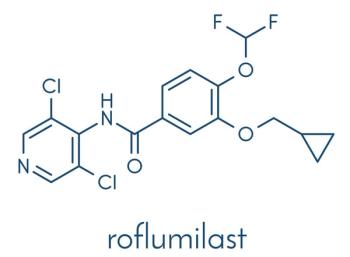
Fixed Drug Eruption Caused by Doxycycline
The morphology of a round, red to purple patch, with or without blistering, is typical of a fixed drug eruption. This entity usually manifests as a solitary spot, but can be multiple. Tetracycline antibiotics and barbiturate sedatives are common causes. This patient had been taking doxycycline.
A 41-year-old man was treated with doxycycline for non-gonococcal urethritis. Five days into his therapy, a superficial but painful neck lesion developed. He otherwise felt fine.
Key point: The morphology of a round, red to purple patch, with or without blistering, is typical of a fixed drug eruption. This entity usually manifests as a solitary spot, but can be multiple in nature. The most common cause of this type of drug eruption is the tetracycline family of antibiotics; another common cause is the family of barbiturate sedatives.
Treatment: The offending drug was stopped and a low-potency topical corticosteroid applied twice daily. It took many months for the resulting dyschromia to fade.
Note: Should the same drug, or a structurally related medication, be administered in the future, the same reaction will recur in the same anatomic site.
Newsletter
Enhance your clinical practice with the Patient Care newsletter, offering the latest evidence-based guidelines, diagnostic insights, and treatment strategies for primary care physicians.





















































































































































































































































































